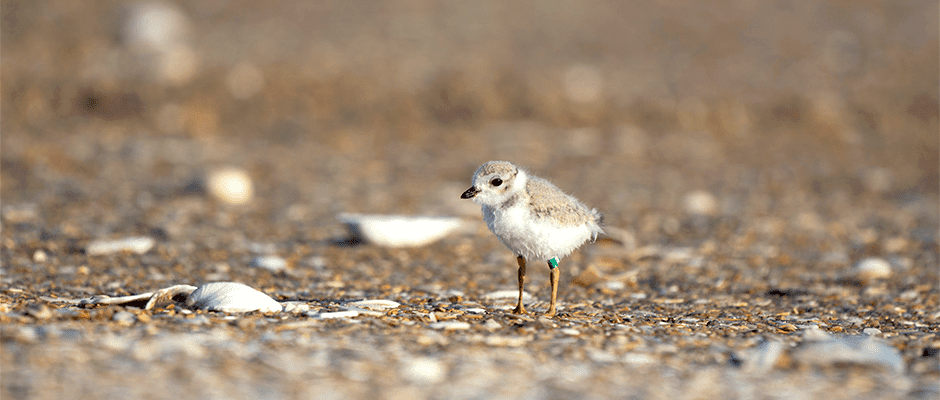Share this article
JWM: Hungry ghost crabs may haunt plover nests
Imperiled piping plover (Charadrius melodus) populations have been gradually growing since the species gained federal protection over three decades ago, but in North Carolina, they’re rearing the fewest fledglings. Researchers recently identified some unexpected probable culprits — ghost crabs (Ocypode quadrata) devouring the plovers’ eggs after slipping through predator exclosures designed to secure their nests against more obvious, bigger threats.
These findings suggest that implementing a way to keep the crustaceans out could improve plover productivity.
“Ghost crabs can be a main predator when all other predators are excluded, which might not have received much attention before,” said Eunbi Kwon, first author on the study published in the Journal of Wildlife Management.
Piping plovers nest along the Atlantic coast from New Brunswick to North Carolina, where they fell to 20 breeding pairs in 2004 due to predation, habitat loss and degradation stemming from development and sea-level rise, severe storms and recreational disturbance. Scientists estimated 1,765 total breeding pairs in 2016 after conservation programs started reversing the national decline, but the North Carolina plovers have been lagging in the number of offspring they fledge.
A research scientist with the Virginia Tech Shorebird Program, Kwon and her colleagues noticed something was eating plover eggs on the Cape Hatteras National Seashore even if nests were shielded from predatory birds and mammals with wire cages. Spotting ghost crabs or their burrows close to the nests before the eggs disappeared, Kwon’s team decided to dig deeper into National Park Service data gathered daily from 2008 to 2015 at 94 plover nests surrounded by predator exclosures.
The records revealed that ghost crabs or their burrows could be seen within 25 percent of the cages and sometimes caused plovers to abandon their nests. The crabs fed on eggs in almost 10 percent of the nests, and the daily survival rate of nests with the predators was lower than that of crab-free nests. Kwon and her collaborators found the ghost crabs’ impact on the plover nests was more than double that of all the other factors they evaluated, including weather, breeding time and clutch size.
“As we predicted, the presence of the ghost crab was the most strongly and negatively correlated with the daily survival of a nest,” Kwon said.
This means the crabs could have a more substantial effect on the reproductive output of plovers than biologists once considered, she said, especially when the more conspicuous larger predators can’t enter their nests. These results contradict previous scientific conclusions that ghost crabs didn’t prey on piping plover nests but affirm anecdotal reports of this interaction, Kwon said.
“Given the amount of effort resource managers put in to protect piping plovers from potential predation, it is important to have a full picture of the identities of predators and how we may protect nests from them,” she said. “We hope our study broadens people’s image of beach predators to unsuspected species such as ghost crabs.”
Modifying the wire cages to thwart the crabs’ intrusions without impeding the plovers’ movements would be difficult because the predators are smaller than the wading birds and can burrow into caged nests from meters away, Kwon said. She recommends figuring out a strategy to block this burrowing near piping plover nests and calls for more research on the consequences of removing ghost crabs, a strategy that has increased nesting success in Florida.
TWS members can log into Your Membership to read this paper in the Journal of Wildlife Management. Go to Publications and then Journal of Wildlife Management.
Header Image: A seventeen-day-old piping plover chick explores the beach. ©Michael Gosselin








